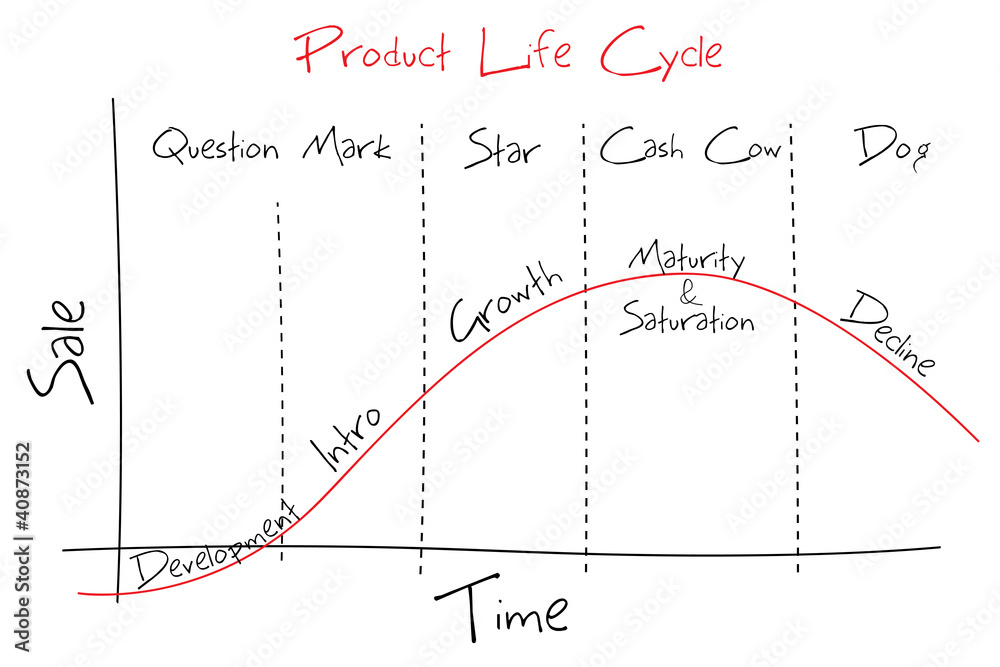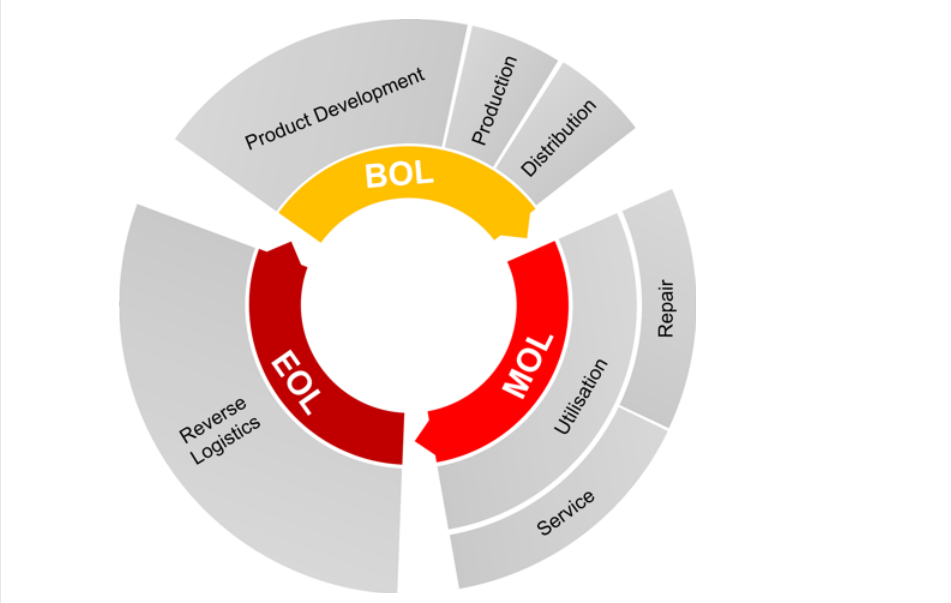A product, like a person, experiences many phases throughout its lifetime. After being released, a product will go through a period of development, maturation, and final decline. Understanding the product life cycle can help determine your product price and modify your marketing plan.

| Table of Content
Introduction
|
Business environment is moving faster. And, to keep up with rapid changes, businesses need to respond & adapt to stay ahead of the curve.
When it comes to the software development business, product development is challenging. The reason is customers are becoming more demanding.
In short, to satisfy the growing needs of product development outsourcing in the modern world, product lifecycle management (PLM) can support the exceeding demands.
To manage a product from ideating to finalizing—product lifecycle management (PLM) has long been the backbone. And to make the most out of each stage of your PLM, your marketing plan should include strategies.
To begin with, you need to understand Product Life Cycle Management (PLM) to understand the different stages of the product life cycle.
An Overview of the Product Life Cycle (PLC)
Product life cycles generally represent the time between introducing or removing a product to the competitive market. Managers and marketing experts use this idea to decide when it is suitable to enter new markets, lower pricing, enhance advertising, or change the packaging. A product life cycle management plan specifies how a product can be continuously serviced and maintained.
According to Linda Gorchels, in her book, “The Product Manager’s Handbook”, the product life cycle is defined, and some key assumptions are offered. Here are the following things, based on the assumptions:
- The lifespan of most products is limited. As a result, every product will eventually undergo a product life cycle.
- The business faces opportunities and challenges at every stage of its life cycle.
- During each phase of a product’s life cycle, the efforts of design, development, marketing, purchasing, and others will differ.
Features of Product Life Cycle
A product’s life cycle is defined as its demand pattern over a specified period. PLCs possess the following characteristics:
- Only some products go through every stage. The majority of products fail after introduction.
- Each product goes through a particular PLC stage. Depending on the product, this period may vary.
- The life span of some products is concise, and they complete the entire cycle very quickly.
- A product may get a new life cycle if it is repositioned. Repositioning involves changing the image or perceived utility of a product.
Stages of Product Life Cycle
Knowing the different stages of a product’s life cycle will help you with strategic pricing. It goes through various stages between when a product is introduced to the market and when it is discontinued. When a company selects how to price goods or services based on what will draw customers, this is known as strategic pricing.
A product’s life cycle goes through introduction, development, maturity, decline, and deletion. Each stage takes a different amount of time.

Introduction
When a product is first introduced to the market, it is in its initial stage. During this stage, sales could be faster since consumers are unfamiliar with the product. However, there is often low competition, so you can decide to step up your marketing initiatives to enhance awareness.
Developing a product is expensive, so you must create a pricing strategy. Prices vary depending on the industry and financial projections. The high price of a product is perfect if there is a demand for it.
Pricing strategy: According to their industry and financial plans, many companies charge low or high prices for their products.
Development
The development stage of the product is marked by considerable demand for the development and significant sales. When you market a product while it’s still developing, your rivals can imitate it. You should put more effort into convincing them to pick your product over other brands.
Pricing strategy: You should minimize your rates and implement a competitive pricing plan in light of the market competition.
Maturity
Most of your target clients already own your product when it is mature.
Your sales volume will stay the same as in the growing phase. The maturity stage has the most competition. Many companies focus on selling their products while highlighting their distinction and special offers.
Pricing strategy: Competitive pricing is still used by many businesses in the mature stage. Consider lowering your pricing to retain clients. However, be sure to stay above your break-even point. Your pricing strategy may include discounts to encourage customers to choose your product over other brands.
Decline
The final phase of a product’s life cycle is diminished. As a result, companies must choose whether to stop or keep developing and selling the products. The business that does not pull the product adds features to make it stand out more and give it new life.
A product may decline for many reasons:
- The competitors’ product receives more attention than yours
- The product no longer appeals to consumers
- The product is no longer profitable for you
Pricing strategy: Many companies decide to minimize the product price when sales are down. At this point, you can experiment with several alternative pricing techniques. To draw in more customers, you might risk a price strategy that offers discounts. It will help in making a space at your company for new products.
Bundling is yet another pricing strategy choice. To eliminate the minimizing of the product and boost sales, it can include it in a bargain with other goods.
Quick Plug: We offer senior, experienced iOS application developers at Netsmartz who will work exclusively on your application. Instead of hiring part-time coders, hire professional engineers for your iOS development project to eliminate skill ambiguity and risk.
How Do You Manage Product Life Cycles?
PLM refers to the process of managing products throughout their development lifecycle.
PLM is primarily designed to simplify and facilitate flexibility. All information must be understandable, and any product improvements must be optimized, so you don’t have to start from scratch.
All processes must be accurate, and waste must be kept to a minimum with good PLM. The best opportunity for a business to succeed is through a holistic, product-centric approach.
Although there are several PLM models, the processes listed below are the most common.
Managing Product Life Cycles in Three Stages

Beginning of Life (BoL)
The BoL stage covers all aspects of the product, from its idea to development. All the requirements, analyzing, and testing ideas needed to develop a product are considered during the early development phase. The BoL stage is vital regardless of the business you are in. Your proposal will include a description of your product’s specifications, procedures, and supply needs.
Middle of Life (MoL)
The MoL is delivered after manufacture. The product is distributed, used, and serviced when it is in the customer’s hands throughout this phase. Future product development can use the information gathered regarding sales, failures, maintenance rates, and customer experiences.
End of Life (EoL)
End of life (EoL) is developed when your software product has arrived at the end of its useful life. You can now recycle, retire, or dispose of your product. Companies must keep track of the parts of their products that may be useful for future developments.
Here is how the three stages of PLM play out:
Cohesiveness keeps the process product-centric and gives the product a better chance of success in the marketplace.
4 Steps to Ensure a Successful PLM
Based on an investment study by Accenture, these four steps can help your business successfully manage your product life cycle:
Define PLM capabilities using a common framework
It guarantees that all metrics measure what they should be monitoring and that any inconsistency between processes is fixed. Select the ideal product management framework that will support your growth and aims to align your company’s strategy.
Prioritize products and businesses with a framework
The product performance at each of its four life cycle stages must be measured using a few appropriate measures, and these metrics must be connected to the top priorities for each business branch. Your product will be managed ineffectively if you do not have this.
Investment planning with frameworks
A decision regarding rearranging the funding for the business can be made using the framework metrics. All company stakeholders can make decisions based on measurements provided by PLM, which is advantageous to all parties.
Update PLM framework
You need to hire a software development team to ensure the PLM framework is durable and delivers value to the organization rather than functioning as a silo project.
Start Your Product Concept Analysis Today
The mechanism of a product life cycle pricing is a tool used by marketers, designers, and management to ensure the long-term success of a product. Smart pricing strategies can help businesses maximize the value of their products and services. It is important to note that rising sales only sometimes indicate progress, and declining sales do not always indicate the world’s end.
Almost every product sold undergoes a product life cycle. This cycle includes introduction, development, maturity, and decline, which we explained above in the blog, and it varies from product to product or industry to industry. Hence, product pricing must be done after understanding its role and importance in achieving consistent sales for a business.
To test your product ideas, features, and target audience, begin with the product idea analysis when you are ready to embark on your product life cycle. As your product progresses through its lifecycle, our agile software development strategy will assist you in making better strategic decisions and achieving positive results.
| Take your product delivery from idea to launch & beyond with our product development services.
Request Free Consultation |
Get in touch with us now to learn more about our digital marketing services.





